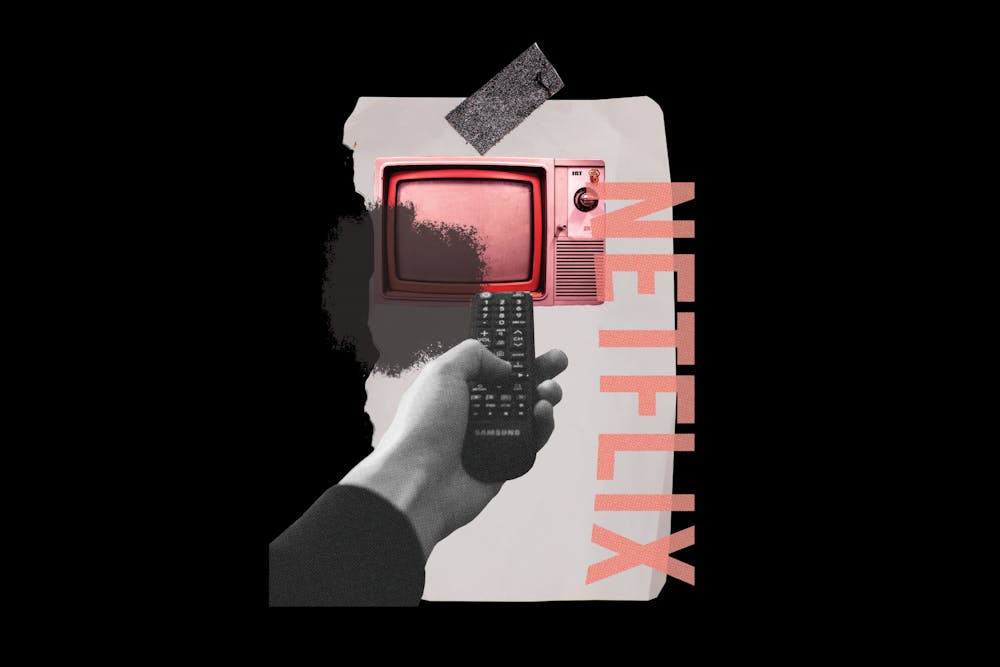On Oct. 20, hundreds of Netflix employees staged a walkout in protest of Netflix’s dismissive response to transgender employees’ criticism of the release of Dave Chappelle’s new standup special, The Closer. The crowd was composed of members of the trans community and their allies, sporting signs such as “Team Trans,” and “Black Trans Lives Matter” and “Netflix, do better.”
The Closer debuted on Netflix on Oct. 5 and was soon met with controversy. It’s fair to say that Dave Chappelle is known for his inflammatory comedy style. This isn’t the first time trans employees have spoken out about the transphobic jokes in Chappelle’s standup routine—in 2019, the release of Sticks & Stones prompted criticism as well. Some of The Closer’s jokes stood out—Chappelle joked that he was “Team TERF” (which stands for Trans–Exclusionary Radical Feminist) and said that rapper DaBaby’s homophobic comments “punched the LGBT community right in the AIDS.”
The ongoing Netflix scandal isn’t only about the question of whether comedy has to be politically correct, or even whether Dave Chappelle should be cancelled. Instead, employees’ criticism of Netflix provides a jarring example of how companies tokenize marginalized workers while still refusing to listen to their concerns beyond a surface level.
Netflix brands itself as an inclusive workplace. That’s often true from a first glance, but when the company is forced to confront deeper issues of oppression and inequality, the concerns of marginalized workers become secondary to its efforts to save its brand image.
B. Pagels–Minor, a nonbinary employee who was fired by Netflix after allegedly leaking company information about the special’s viewership metrics and cost, spoke to Vulture magazine about their experience at the company before the walkout. They co–led Black@Netflix and Trans at Netflix, dedicating their time to several external recruitment efforts. “Honestly, Netflix was like my Shangri–la,” they say. “I was like, Oh my gosh, they’re so nice to me. They don’t misgender me.”
The supposed culture of inclusivity described by Pagels–Minor strikingly contrasts the company’s response to their and other Trans employees' concerns about the content of the special. Prior to the walkout, Netflix co–CEO Ted Sarandos sent a company–wide email in response to the mounting criticism over the comedy special, stating “While some employees disagree, we have a strong belief that content on screen doesn’t directly translate to real–world harm.” He has since walked back his highly–criticized statements, but the special is still streaming on Netflix with no sign yet of any of the employee’s walkout terms being addressed. Netflix’s website claims “Inclusion unlocks innovation,” but the valid concerns of trans employees and allies are being dismissed in the workplace.
The appearance of inclusivity is profitable. To attract key audiences, especially young people and people of color, many brands have aligned themselves with diverse messaging—especially in the wake of summer 2020’s racial injustice protests. And yet, these public–facing diversity efforts don't always align with a company’s actual work environment. Big names such as Netflix overwhelmingly have white people in their highest leadership positions. Black people, for example, account for only 3.2% of senior leadership roles at America’s top companies.
Though Netflix may be the most recent example of the tokenization of workers, it is certainly not the only one. The YouTube channel and magazine Bon Appétit's down–to–earth, diverse group of chefs were internet favorites. Millions of people would tune in to watch the test kitchen’s chefs take part in food challenges and explain their favorite dishes. However, in Aug. 2020, assistant food editor Sohla El–Waylly detailed the food company’s discriminatory practices behind the scenes. According to El–Waylly, she and other chefs of color weren’t compensated for their video appearances like their white counterparts were—instead, she was used as a “display of diversity.”
Though the two terms are often used interchangeably, diversity and inclusion are not the same. Diversity is often seen as simply having people of marginalized racial, gender, or sexual identities on staff. However, being an inclusive workplace is more about whether or not those workers are genuinely being treated well. How does the company respond to criticism about their practices? Are diversity efforts being treated as an ongoing process, instead of as a one–and–done checklist? These are the things that distinguish real inclusion from surface–level PR moves.
Tokenization is merely a quick fix to existing structural equity issues. It harms the company’s workplace environment, but it also harms workers who are made to feel that they can never really belong. Diversity and inclusion need to be more than marketing strategies—they need to be put into practice. When Netflix and other large companies listen to underrepresented voices, the diversity they outwardly portray will finally feel genuine.

